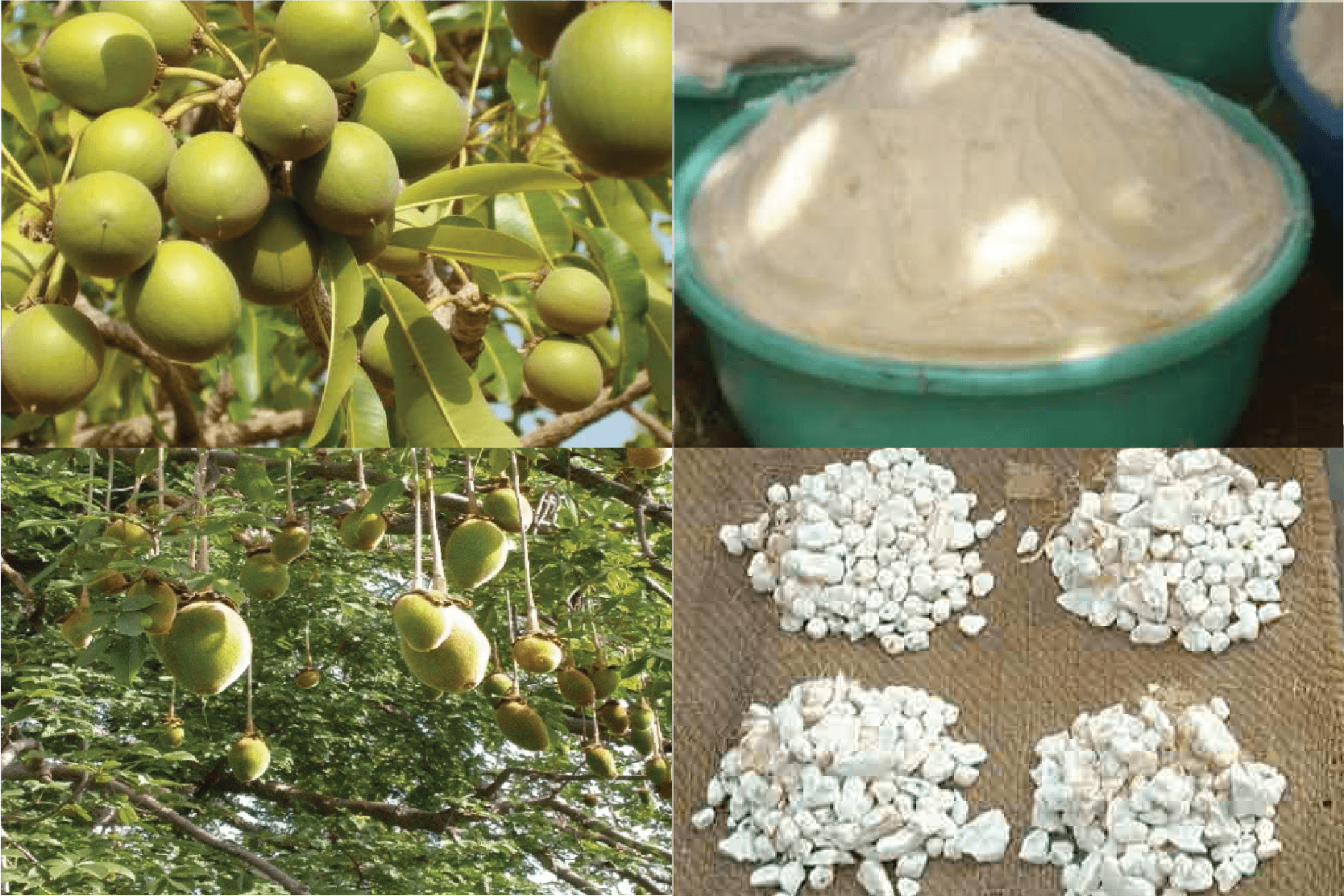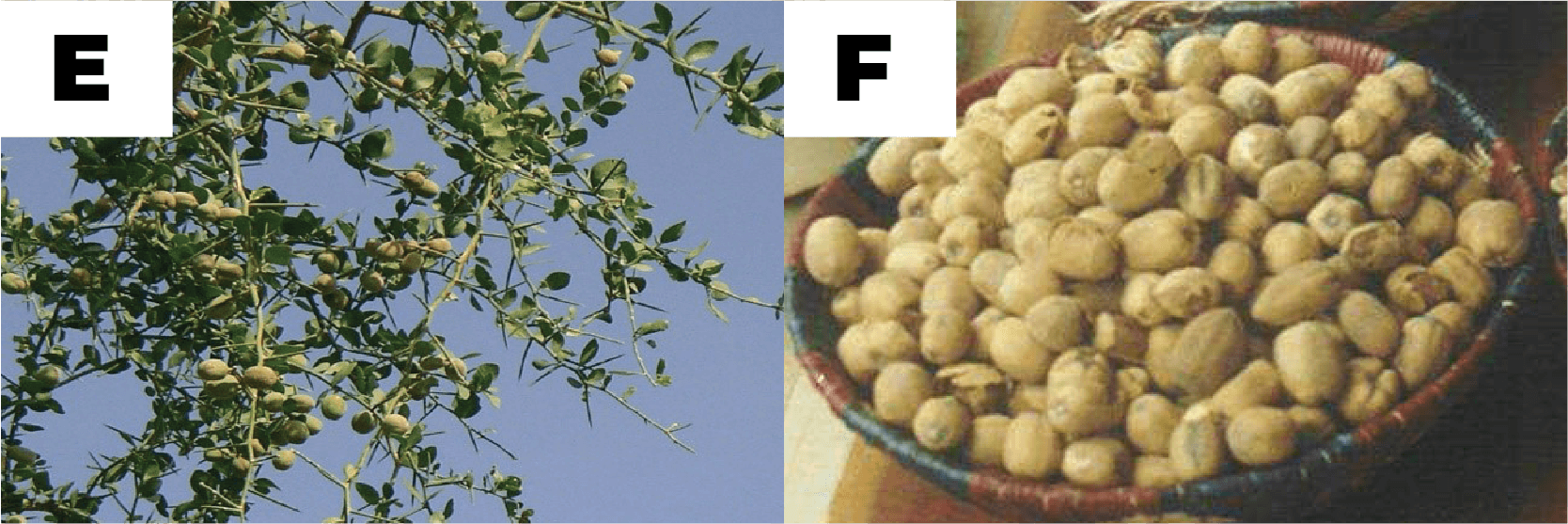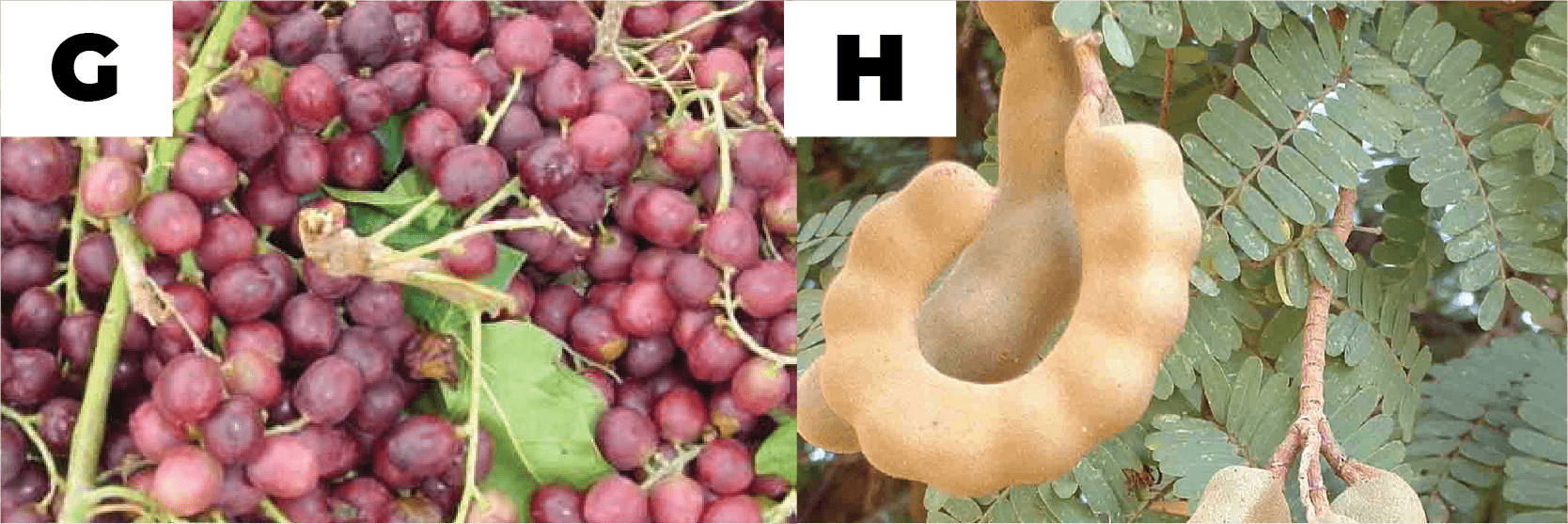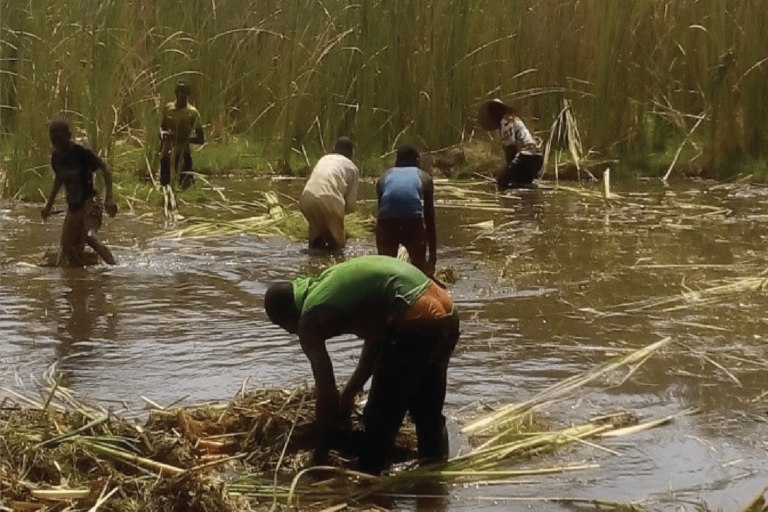
Research Details
- Recherche : Role of non-timber forest products in household food and nutritional security
- Chercheur : DRABO Jeannine Marie Patricia Lantolè
- Categorie : FOOD, NUTRITIONAL SECURITY AND RESILIENCE
- Année : Juin, 2019
- Localisation : THION / BURKINA FASO
1. CONTEXT, PROBLEM AND OBJECTIVE
Despite its importance in terms of employment and gross domestic product (more than 30% of GDP (SP-CPSA, 2016)), the agricultural sector has not experienced significant development capable of accelerating progress towards strong food security for Burkinabè households. Thus the problem of access to healthy, nutritious food in sufficient quantity by populations is acute in Burkina Faso (MAHRH, 2016). According to the results of the global analysis of vulnerability, food security and nutrition carried out in 2014 (WFP, 2014), 19% of households are food insecure, including 1% in a severe situation. The nutritional situation is equally worrying: chronic malnutrition, underweight and acute malnutrition among children under 5 years old are respectively 34.1%, 24.4% and 10.2% (MAHRH, 2015) . This observation results from several factors including low agricultural productivity, poverty and poor dietary diversification of populations. It is therefore necessary to diversify sources of food and income. The valorization of non-timber forest products (NTFP) could be a saving alternative for these households.
Indeed, approximately 70% of the national territory of Burkina Faso, i.e. 1,904,8352 ha, contains a great diversity of NTFPs (MAHRH, 2016). Burkina Faso has 376 species that provide NTFPs (edible leaves and fruits) (PNSR, 2012). NTFPs constitute an important source of food and income for populations, especially in rural areas where a high proportion of people experiencing food and nutritional insecurity is observed (Yaro, 2006; Treeaid, 2008). The objective of this study is to determine the role of NTFPs in food and nutritional security.
2. METHODOLOGY
This study was carried out in three villages in the rural commune of Thion, Gnagna province (Eastern region). The commune of Thion is an intervention zone of the World Food Program subject to food and nutritional difficulties linked to the deficit in agricultural production. A questionnaire was administered to one hundred and four women from the Union of YENTEMAYE Women's Groups in the commune of Thion, working in the field of processing local products. A descriptive analysis allowed us to inventory the different species providing NTFPs exploited by women and to determine the level of consumption and marketing of NTFPs.
The linear regression model was used to analyze the determinants of the level of household food and nutritional security. Data were analyzed and processed using software such as Statistical Package for Social Sciences (SPSS) version 20.0 was used for descriptive analyses, Stata version 12 for multiple linear regression and Excel 2013 software was used for data entry and the preparation of tables and graphs.
3. RESULTS – DISCUSSION
Exploitation of NTFPs
The exploitation of NTFPs in our study area concerns 48 species divided into 43 genera and 30 families. Gbangou in 2005 inventoried 99 species providing NTFPs exploited by the local populations of the KaboréTambi national park. This difference could be explained by the fact that ecological conditions differ from one area to another. In fact, all these studies were carried out in forest areas. However, in our case, the study area does not have a forest and women acquire NTFPs in the bush, in the fields, and at the market. Also the most exploited species in our study area are: Vitellaria paradoxa, Azadirachta indica, Balanites aegyptiaca and Adansonia digitata. Thus, despite the difference in agro-ecological conditions, certain NTFP species are common in all regions of Burkina and even in the sub-region. Furthermore, populations use different parts (leaves, fruits, roots and bark) of plants according to their needs. The leaves are the most used part. In fact, 85.41% of plants are exploited for their leaves. The high proportion of leaf use could be explained by their easier accessibility but also by their importance for various uses such as food, fodder and pharmacopoeia (Traoré et al., 2011). Pharmacopoeia is the field where there is the greatest number of species (36) cited by women. In the area of food, a total of 33 species are used by women in our study area. Gbangou (2005) listed 32 species of plants from which the NTFPs used in the food of the local populations of the Kaboré Tambi National Park are derived.
Plate 1: photograph of the main non-timber forest products; A and B = Vitellaria paradoxa; C and D =Balanites aegyptiaca; E and F=Adansonia digitata; G = Lannea microcarpa, and H = Tamarindus indica
Consumption of NTFPs
The populations of the study area have several sources of food, namely agricultural production, purchases, NTFPs and livestock (Table 1). NWFPs constitute the second source of food after staple foods such as cereals. Soubeïga (2004) and Gbangou (2005) reached the same results. This clearly demonstrates the importance of NTFPs in the food ration of rural households. Ouédraogo et al. (2013) highlight the dependence of rural populations, especially the poorest, on NTFPs.

Analysis of the data shows that NTFPs exploited for their leaves are the most represented among NTFPs consumed by households (Table 2). The leaves of Adansonia digitata and the processed seeds of Parkia biglobosa (soumbala) are the most consumed (respectively 38.5% and 36.5% of households). We also have the leaves of Corchorus tridens, Cassia obtusifolia, Glossonema boveanum, Boerhavia diffusa and Ammannia prieureana which are consumed by respectively 31.7%, 19.2%, 9.6%, 5.8% and 5.8% of investigated. On average, two types of NTFPs are consumed per day. Lamien and Bayala (1996) note that the contribution of non-wood forest products to the nutritional balance of populations and their periods of availability give them a role as supplementary food. The period of abundance of NTFPs is in the third trimester. This period also corresponds to the food shortage period in the study area and the period of our investigation.

Marketing of NTFPs
The NTFPs marketed by the women in our sample during the last six months preceding the survey are: oil and soap from Vitellaria paradoxa, Balanites aegyptiaca, Azadirachta indica, fruits of Lannea microcarpa, Adansonia digitata and Parkia biglobosa. Income from the sale of NTFPs is recorded in Table 3.

The income generated by the exploitation of NTFPs is low. In fact, women receive at the Center an average of 35,000 FCFA/year, or around 5,830 FCFA/month. The average income generated individually is 6,000 CFA francs. The general average of total income (Center income and individually generated income) is 41,000 FCFA.
It appears from Table 4 that food occupies the largest share in the distribution of women’s income. They spend on average 41.67% of their income on food. The rest is essentially distributed between health expenses which come in second place with an average of 21.67%, and those for children's schooling which are on average 15% of income. Our results are in the same direction as those of Zallé (2008) and Kagoné (2016) who report that the income obtained by women in the marketing of shea products is allocated primarily to food. Also, our results corroborate those of Millogo (2008) who indicates that soumbala producers use the income generated by the sale to primarily purchase condiments and cereals. Thus, NTFPs, in addition to allowing women to participate in household expenses, contribute to improving their food and nutritional security.

4. CONCLUSION AND OPERATIONAL RECOMMENDATIONS
It appears from our study that a fairly large number of NTFPs are used by populations and for various purposes. In addition, these products are available at any time and much more during lean periods. They constitute the second source of food and contribute significantly to the dietary diversification of households. Also, with regard to the marketing of NTFPs, our results showed that income earned from the sale of NTFPs contributes to improving the food and nutritional security of households. Indeed, food is the area where women invest most of their income from NTFPs. In view of all these results we recommend:
5. BIBLIOGRAPHICAL REFERENCES
GBANGOU Y. R., 2005. Analysis of the demand for non-timber forest products from households bordering the KaboréTambi National Park (BURKINA FASO). Engineering dissertation, Option: Sociology and rural economy, Polytechnic University of Bobo (UPB), Institute of Rural Development (IDR), Bobo-Dioulasso, 73p.
OUÉDRAOGO M., OUÉDRAOGO D., THIOMBIANO T., HIEN M., LYKKE A.M., 2013. “Economic dependence on non-timber forest products: case of households living near the Bolt and Koflandé forests, South-West Burkina Faso”. Journal of Agriculture and Environment for International Development – JAEID 2013, 107 (1): 45 – 72.
WFP, 2014. Global Analysis of Vulnerability, Food Security and Nutrition (AGVSAN). World Food Program, Fewsnet, Ouagadougou, Burkina Faso, 108p.
SOUBEIGA K. J., 2004. Analysis of the demand for non-wood forest products in the diet of rural households: case of the departments of Bondoukuy (Mouhoun) and Nandiala (Boulkièmdé). Engineering dissertation, Option: Sociology and rural economy, Polytechnic University of Bobo (UPB), Institute of Rural Development (IDR), Bobo-Dioulasso, 62p
TRAORE L., OUEDRAOGO I., OUEDRAOGO A. et THIOMBIANO A., 2011. Perceptions, uses and vulnerability of woody plant resources in the South-West of Burkina Faso. Int. J. Biol. Chem. Sci. 5(1): 258-278.
TREE AID, 2008. Diagnostic study on small and medium-sized forestry enterprises in Burkina Faso. Ouagadougou, Burkina Faso, FAO, Final Report, 61p.







